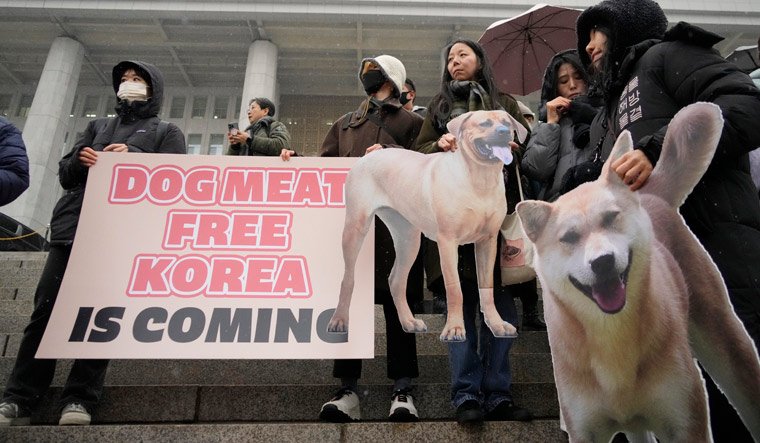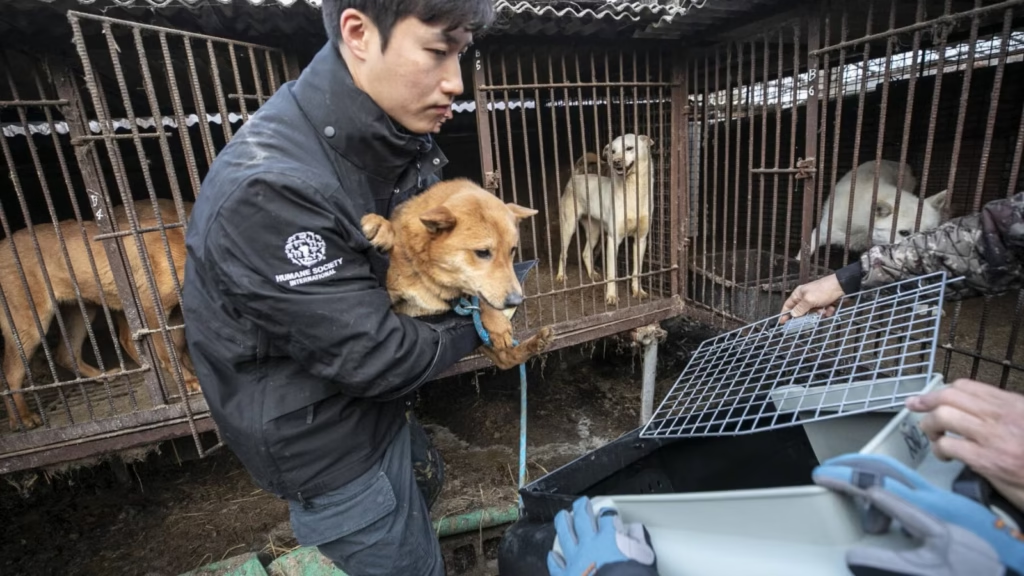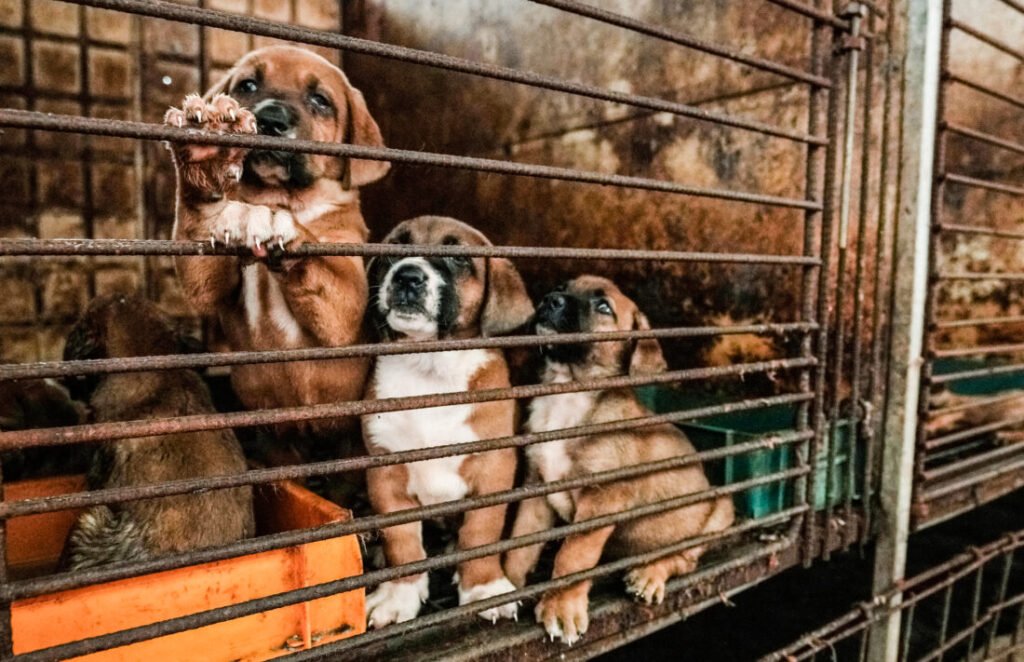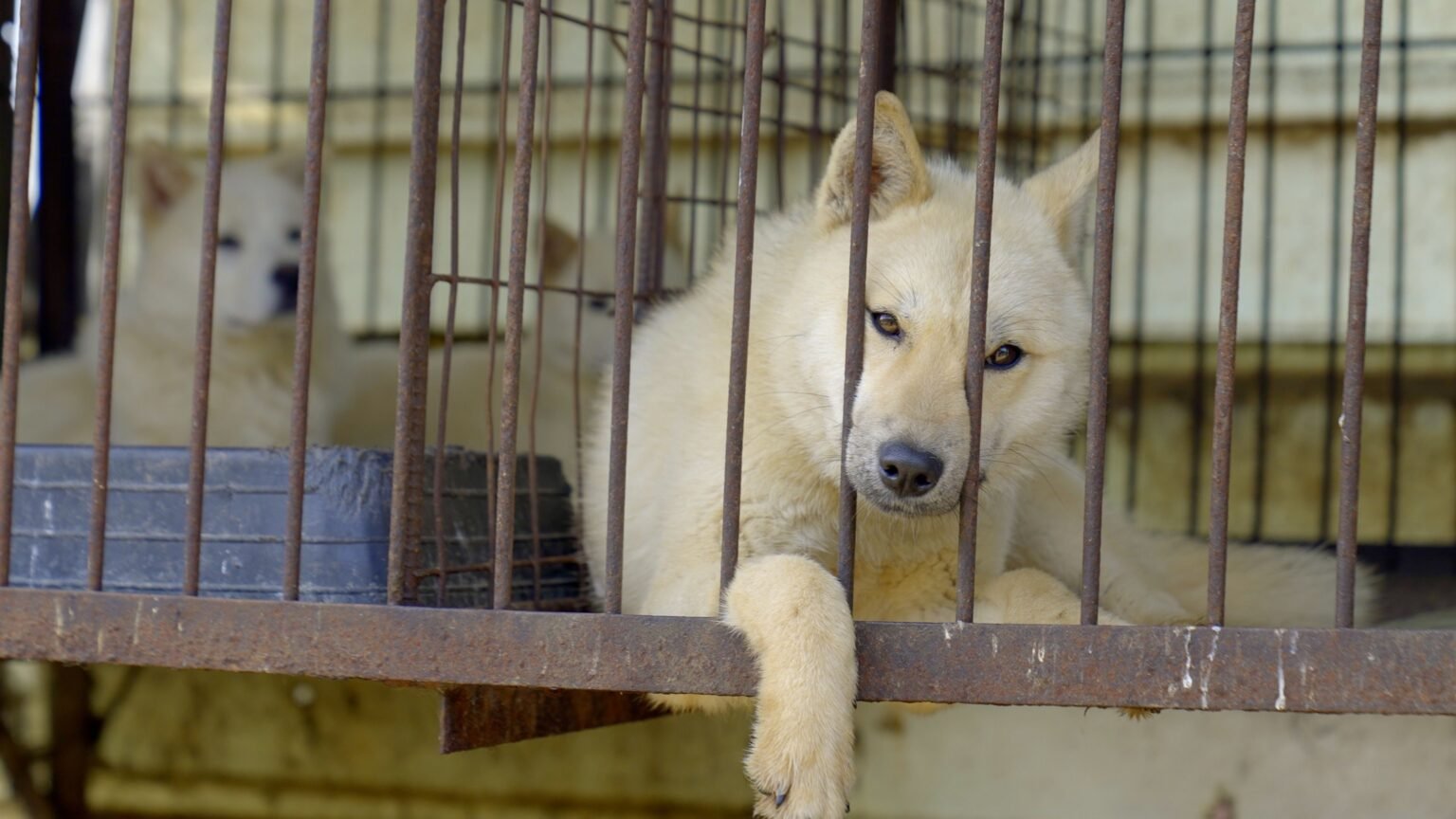Korea Dog Meat Ban: A Nation at a Crossroads
In a landmark move, South Korea officially passed a dog meat ban for human consumption in early 2024, with full enforcement expected by February 2027. While hailed by animal rights activists as a major victory, the dog meat ban in Korea has created deep anxiety among farmers, traders, and animal welfare groups alike. With over 500,000 dogs currently on meat farms, the country now faces the daunting challenge of addressing the fate of these animals before the dog meat ban Korea deadline arrives.
Farmers Left Behind by Korea’s Dog Meat Ban
Reverend Joo Yeong-bong, once a preacher and now president of the Korean Association of Edible Dogs, epitomizes the crisis triggered by the dog meat ban Korea passed in 2024. His dog farm, once a viable source of income, is now on the brink of collapse. “We’re drowning in debt,” he laments. “There are no buyers, and we can’t shut down.”

Like Reverend Joo, younger farmers such as 33-year-old Chan-woo—who invested his life savings into the trade—now face prison time if they fail to comply with the dog meat ban Korea enforcement deadline. With 600 dogs to rehome in 18 months, he sees no viable path forward
Flaws in Korea’s Dog Meat Ban Enforcement
Although the Ministry of Agriculture, Food and Rural Affairs (Mafra) has promised support—offering 600,000 Korean won per dog and pledging $4.3 million annually for shelter expansions—implementation remains sluggish. The promised assistance is insufficient to meet the scale of the challenge.
Lee Sangkyung, campaign manager at Humane World for Animals Korea (Hwak), highlights the gap: “They passed the law without a real plan. The logistics of rescuing and rehoming half a million dogs are staggering.”
A Storm of Practical Challenges
One of the biggest hurdles is rehoming the animals. Many dogs from meat farms are large breeds like tosa-inus, classified as “dangerous” in South Korea. Prospective adopters often live in high-rise apartments and prefer smaller, less aggressive breeds. Compounding this are fears about disease and trauma among the rescued dogs.

Additionally, most shelters are already overwhelmed. Humane groups like Hwak have managed to rehome nearly 2,800 dogs since 2015, but absorbing all remaining dogs is impossible.
A Grim Reality: Euthanasia as a Last Resort
Despite the government’s reassurance that euthanasia is not part of its official plan, rights groups admit that it may be inevitable. Cho Hee-kyung of the Korean Animal Welfare Association stated candidly in 2024, “There will be dogs left over.”
This has provoked outrage and heartbreak, especially from those who assumed the ban would include a full rescue strategy.
International Help: A Silver Lining
Some relief has come from overseas. In 2023, the Korean animal welfare group Hwak rescued 200 dogs from a meat farm in Asan, successfully relocating them to Canada and the United States—countries with higher adoption rates and greater public support for rescue initiatives. Former dog meat farmer Yang Jong-tae was moved by the experience. “They handled the dogs like they were people—with so much care and compassion,” he said. “It really touched my heart.”
Still, such international rescue missions are costly and logistically complex. While they represent hope for a small number of animals, they remain insufficient in the face of the dog meat ban Korea has enacted. With hundreds of thousands of dogs still confined in farms across the country, these efforts cannot realistically absorb the overwhelming numbers left behind.
The Ethical Dilemma: Why Dog Meat and Not Other Meats?
Opponents of the dog meat ban Korea implemented argue that it represents a cultural double standard. “Why is it legal to consume beef, pork, or chicken, but not dog?” asks former farmer Mr. Yang. However, veterinary professionals like Dr. Chun Myung-Sun of Seoul National University refute this comparison. She explains that dog meat exists outside of Korea’s formal food safety and hygiene frameworks, making it a riskier option for human consumption.

Beyond health concerns, public attitudes in South Korea have shifted dramatically. According to a 2024 government survey, only 8% of respondents reported eating dog meat that year—a steep decline from 27% in 2015. Even more telling, just 3.3% indicated they would continue to do so after the dog meat ban Korea is fully enforced in February 2027.
A Livelihood Lost
The dog meat industry supported thousands of people. Since the ban’s announcement, 623 out of 1,537 farms have closed. Many farmers, particularly younger ones, now face bleak futures. “We’re stuck, with no way forward or back,” says Chan-woo.
For some, the emotional toll is unbearable. Reverend Joo warns, “By 2027, something terrible will happen. People can’t endure this much uncertainty.”
What Comes Next?
With less than two years before the full ban takes effect, the future remains uncertain. Activists continue to push for a structured, humane phase-out plan that includes funding, rehoming logistics, and mental health support for displaced workers.
In the absence of a clear, compassionate path forward, South Korea risks turning a moral victory into a humanitarian crisis.




